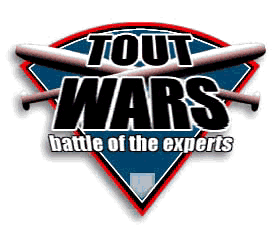 A lot of the analysis in that two-part Most Misunderstood piece on the Hitting/Pitching budget split (No. 9 part 1, part 2) was built on information gleaned by comparing the price expert leagues paid for players on auction day with Post Season Dollar Values for players. That is, pricing what players’ stats last year contributed to fantasy teams.
A lot of the analysis in that two-part Most Misunderstood piece on the Hitting/Pitching budget split (No. 9 part 1, part 2) was built on information gleaned by comparing the price expert leagues paid for players on auction day with Post Season Dollar Values for players. That is, pricing what players’ stats last year contributed to fantasy teams.
While this seems like a straightforward process, the decisions the person doing the pricing makes will change the way those prices can and should be used. You should know how.
For instance, to create my prices (this is a quick telling) I take the draftable pool of players (108 pitchers, 168 hitters (including 24 catcher eligible players) and I count how much of each category they generate. I then compare each player’s production to the total production, and come up with a percentage of the whole that each player generated. Add all a player’s percentages together and we get the total amount each player produced in all categories. It is easy peasy to then convert those percentages into $3120, the draft budget, for each league. Every player gets a price.
Except for one big thing: Should we pay pitchers 50 percent of the budget or 31 percent?
At the end of the season there is no longer any question about what the pitchers are going to do. If it is uncertainty that causes us to reduce their price on auction day, once that uncertainty is removed don’t they earn 50 percent of the budget?
In a word: Absolutely.
But that choice changes the pitcher’s price, and makes it incomparable to his auction price. It makes a much better price to use when analyzing why teams have won or lost in any given season in the context of their leagues, but it is a much worse price for analyzing how an individual player performed—and that is usually what I’m interested in.
I have to give credit here to Les Leopold again. He articulated this distinction in the 1996 edition of How to Win at Rotisserie Baseball, in a chapter called The Two-Price Revolution, which explained why you should use the (then) 65/35 split in the preseason, but as the season moved along price the part that was already played with a 50/50 split.
It was then and is now a correct idea, but this was not a revolution that caught fire. For two reasons I think.
It is really difficult to compare the value of whole teams in post-season analysis. In effect, it doesn’t matter what the absolute dollar values of the players on your team are, partly because they’re mixed up by trades and diluted by all the free loot you and your leaguemates added, and partly because the relationship you’re looking at evaluating that is important is that of each pitcher to the number of pitching points scored, and each hitter to the hitting points scored.
The fact that they’re not on the same scale doesn’t much matter, and it certainly isn’t worth the effort to rejigger the player values to get them on the same scale when analyzing your own team in the context of your league.
In fact, it would generally be less helpful to see that your $24 starter who earned $24 in draft-day dollars actually had $28 worth of absolute value.
A second reason is that fantasy baseball analysts haven’t done much work on whole team values and how they work dynamically (here the 50/50 split would be crucial) because we don’t really have useable data to study these issues in a macro sense. Fantasy leagues today play in too many styles, with too many variations in rules, to compile coherent data. Still, it’s useful to remember what the real split in value is when the season is over.
Another thing to consider when thinking about Post Season Dollar Values is how to value the free loot, the stats that are added during the season via FAABing and waivers.
If you’re doing post-season game analysis of a league’s dynamics, it is useful to have positive values for all those stats. Alex Patton’s famous and groundbreaking Patton Dollars include a clever way to give meaningful value to that loot, basically by valuing the original draft class (the 108 pitchers and 168 hitters) first (after all, they’re the ones we paid $3120 for), then using the same factors for each category on the undrafted players’ stats.
I don’t do that. My $3120 is distributed among an imaginary draft class as it is constituted at the end of the season (the top 108 pitchers and 168 hitters for the season as a whole).
Alex’s prices are a better map of how the season played out for all players, but in order to calculate them he needs actual draft results to determine which players were drafted in the preseason, and he relies on the previous year’s formula to calculate inseason prices (which vary depending on varying hitting and pitching levels).
I adopted my method because I can accurately and in context price players at any time during the season, and in seasons when fantasy baseball wasn’t even played. The two don’t vary much, but some of the difference is because of our different methods.
Different strokes for different folks, you might say. Or maybe better, use the right tool to do a good job.



Pingback: Some Category Valuation Observations for Roto Pricing | Rotoman's Guide